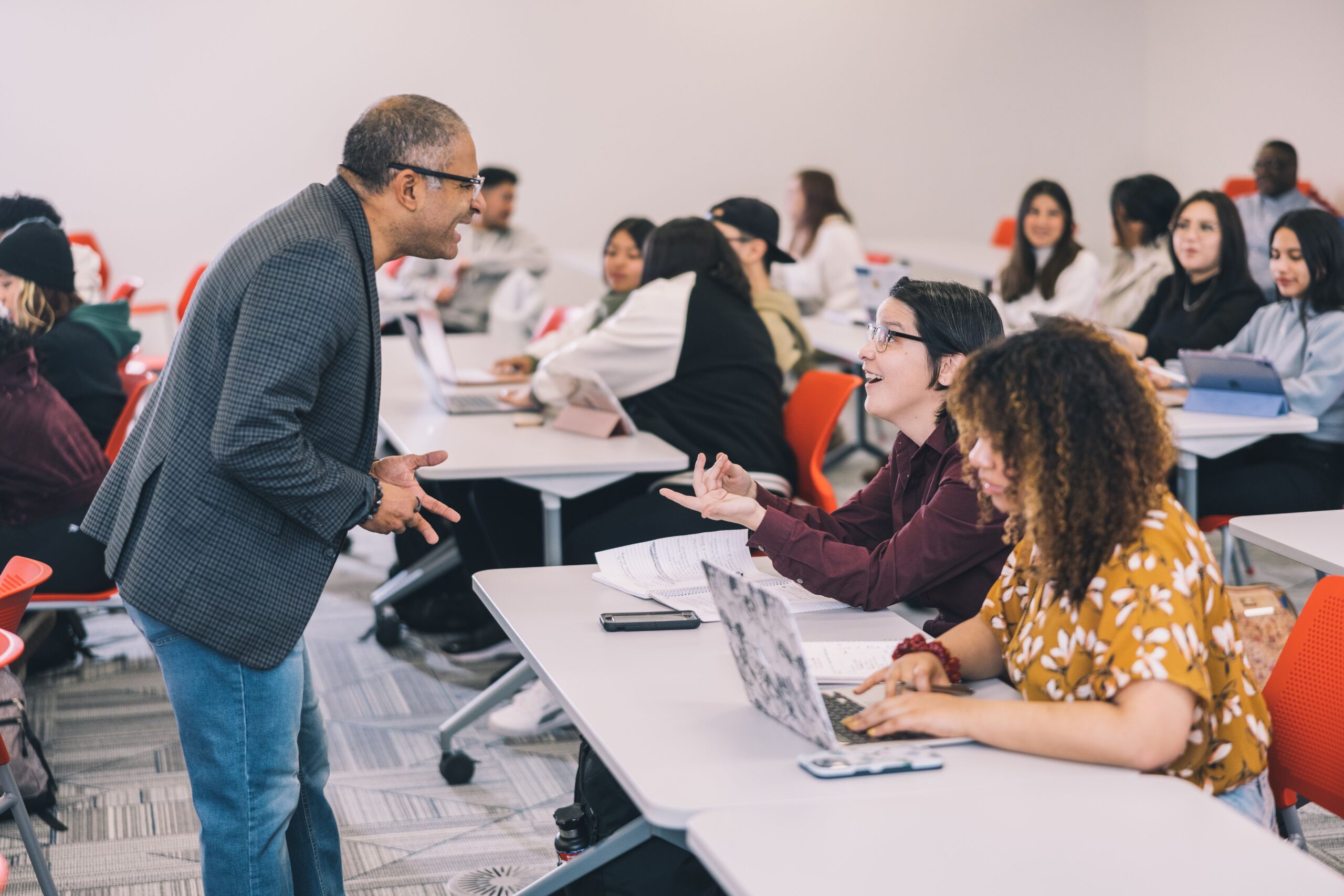While conversations about centering equity have advanced in higher education in recent years, faculty committed to it may struggle to identify and develop practical teaching practices that they can apply to their own courses.
That’s why Achieving the Dream (ATD), in partnership with Every Learner Everywhere, developed and presented the webinar series Operationalizing Equity, Social Justice, and Inclusion to Transform Teaching and Learning in 2022. The four webinars (the recordings of which are available below) feature experienced practitioners of equity-centered teaching presenting specific tools, instructional practices, strategies, and resources, and answering questions from the audience.
The four events are moderated by H. Ray Keith, Associate Director of Teaching and Learning at ATD, and co-developed by him and Ruanda Garth-McCullough, Director of Program Development at ATD. Keith says the webinars “take a multi-pronged approach to advancing culturally responsive and inclusive teaching and specifically look at equity and digital learning.” The goal of the series is to encourage more engagement with the equity process by having instructors share their own experiences and challenge viewers to reflect deeply on their courses and remember the importance of a student-centered learning environment.
“We were really thinking about how we transform the learning experience for students and, specifically, those students who have historically been marginalized in higher education,” Keith says.
Each webinar features a panel of faculty, administrators, and other experts presenting on the featured topic. Many are also experienced coaches and consultants with ATD. Throughout the series, the panelists focus specifically on ways to support racially and ethnically minoritized and poverty-affected students with the aim of reenvisioning both the teaching and learning experience.
Implementing equity-centered materials
Curating Inclusive Course Content that Centers Students and Equity focuses on how to select, organize, and present materials that support equity goals. In addition to specific classroom practices, this event includes discussion of more programmatic-level evaluation of materials. It features panelists Jennifer Townes, Assistant Vice President of Professional Development and Employee Engagement at Southwest Tennessee Community College, LeeAnne McNulty, Director of Institutional Grants at Allan Hancock College, and Rick Rantz, Dean of Academic Affairs at Allan Hancock College.
“They asked viewers to think about the utility of materials that embrace the whole student, their identities, culture, and lived experience and showed how to use those materials with evidence-based teaching practices and digital tools,” Keith says.
Incremental steps at the classroom level
Operationalizing Equitable Teaching and Learning Practices centers on integrating and embedding equitable practices in face-to-face and virtual learning environments. The session provides practical methods and tools for putting equity into action. It features three faculty presenting classroom practices they have experience with — James Gray of Pima Community College, Vincent (Tzu-Wen) Cheng of the Borough of Manhattan Community College, and Stephanie Whalen of Harper College.
Keith notes that much of the discussion in this session focuses on how “implementing social justice and inclusion teaching and learning is incremental.”
Assessment that centers equity
Designing Assessments Through a Culturally Responsive Lens examines the impact of exams and grading and considers alternate assessments that potentially reduce inequitable outcomes.
The panelists include Lydia CdeBaca-Cruz, Program Coordinator of the Mexican American Studies Program, Austin Community College, Tasia VanderVegt, Ed.D. candidate at University of Wisconsin-Stevens Point, and Jason Leggett, Assistant Professor, Kingsborough Community College. They share innovative and digital assessment approaches that center students and allow for authentic and culturally responsive measurement of student learning.
Keith says highlights of the discussion include ways that digital learning allows for creativity in assessment through storytelling, videos, and other projects that allow students to “demonstrate their learning in ways that are meaningful to them” but still align to course outcomes.
Environments that center students
Democratizing Learning Environments includes an in-depth discussion about building student-centered learning environments and asks viewers to reexamine the instructor’s traditional relationship with students.
Panelists include Michele Hampton, Professor of Business Administration at Cuyahoga Community College, Ayse Durmus, a language instructor at University of Colorado, Denver, and Shirley Burnett, Interim Chair/Instructor of Mathematics in University College at Jackson State University. They contrast “sage on the stage” classroom environments with those that reimagine instructors and students as co-creators of knowledge.
Keith says this session helps faculty recognize their own positionality and provides ideas for creating a sense of community in a classroom. “Building a community on the first day of a course and getting to know your students is equally, if not more, important as going over the syllabus on the first day,” he says. “We talked about ways to continue building community and engaging students throughout the semester and examined the positive student outcomes and challenges which instructors have noticed.”
Skills for equity-minded champions
Keith says higher education professionals from adjunct instructors to provosts will find takeaways for their roles and institutions and that both new and seasoned instructors will find the series useful.
“The implementation of teaching practices that address racial and economic inequities is hard work for everyone,” he says. “It’s useful for all faculty to interrogate how and why they’ve designed their course the way they have and consider new ways that they can be doing things. We really tried to reflect on our teaching. ‘Are we centering the student? Who are my teaching practices working for? Who are they not working for?’”
Keith wants viewers of the series to take away concrete practices to implement equity, inclusion, and culturally responsive teaching in ways that address everyday instructional challenges.
“I hope instructors who participated or watch the series can develop skills to transform their classroom, their students’ experiences, and their institutions,” he says. “Then, they can put those skills into action and build the muscles to be social justice, anti-racist, and equity-minded champions.”
See more videos on equity-centered teaching on Every Learner Everywhere’s YouTube channel


